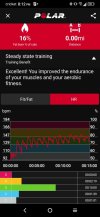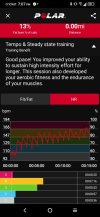Paotle
Level 4 Valued Member
Pavel, thank you very much for this interesting book.
Being a person with a lot of fast twitch (FT) muscles (11s on 100m FAT at 16yo, standing broad jump at 9ft,6inch), I have trouble recovering in 1 minute. Is this something you've experienced? Is it normal for such FT athletes (sprinter, olympic lifting, high jumper, wide receivers...) to need more rest, compared to endurance (slow twitch) athletes?
Being a person with a lot of fast twitch (FT) muscles (11s on 100m FAT at 16yo, standing broad jump at 9ft,6inch), I have trouble recovering in 1 minute. Is this something you've experienced? Is it normal for such FT athletes (sprinter, olympic lifting, high jumper, wide receivers...) to need more rest, compared to endurance (slow twitch) athletes?



